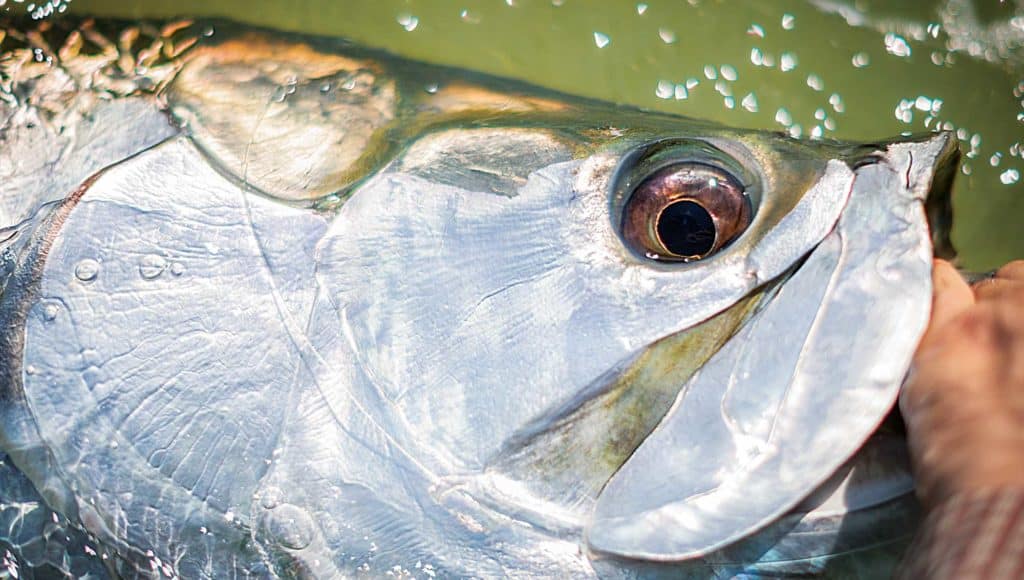
As it happens every April when water temperatures hit the magic 75-degree mark, thousands of tarpon on both the Atlantic and Gulf coasts of the Sunshine State leave their winter hangouts up coastal rivers, deep inlets and passes to join a remarkable procession that avails anglers with amazing opportunities to tangle with what’s widely considered a big-game species in accessible inshore waters.
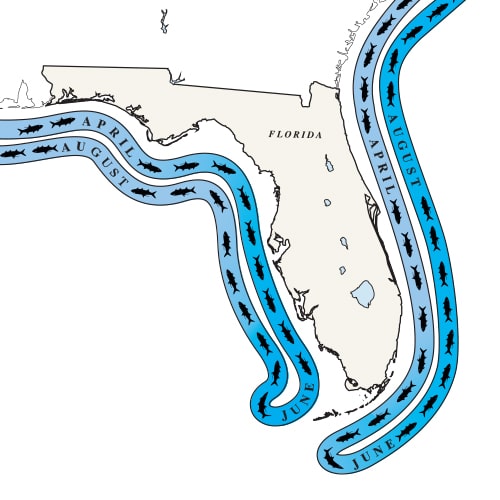
Grouped in small packs of a dozen fish or fewer, or massive schools of 50, 100 or more, waves of this tarpon migration trace the contour of both Florida coastlines, heading south on the Atlantic side, and east and then south on the Gulf side before turning around sometime in June and cruising back in the opposite direction. Somewhere along the way, the fish go as much as 100 miles offshore to spawn in open water.
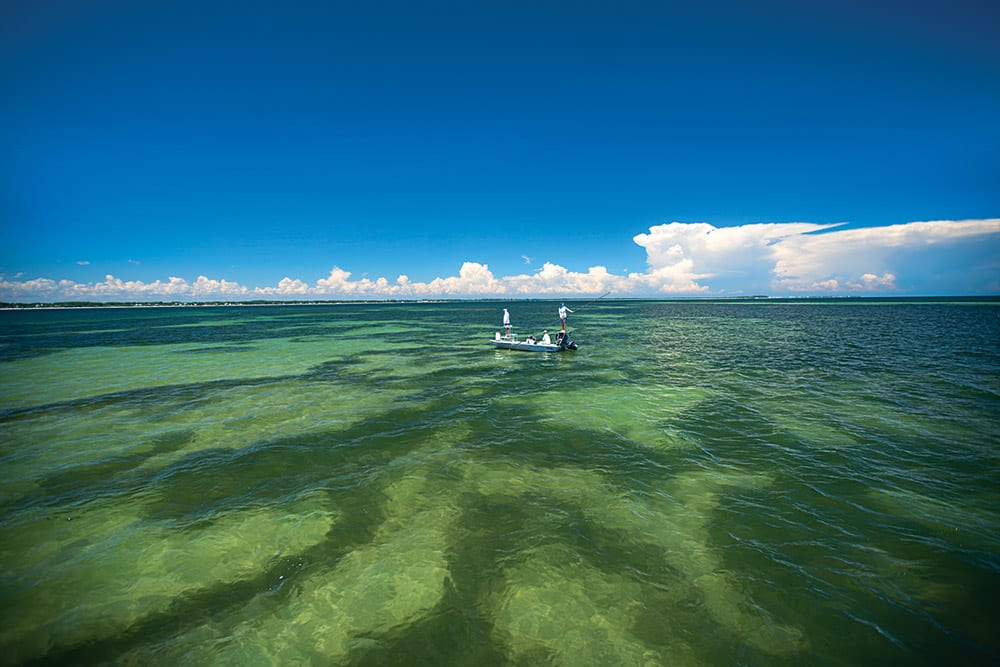
Choose Your Battles
Traveling across all sorts of terrain during this spring and summer migration, tarpon enable anglers to pick their battleground by geographical location and topography best suited for the existing conditions and their preferred fishing style. Many fly-rodders and other sight-casters, for instance, flock to the Keys and various Gulf beaches known to offer a number of productive locations with clear water and light bottom. Live-baiters, meanwhile, usually opt for fishing channels, points, inlets and passes, or look for tarpon actively feeding on schooling baitfish off adjacent beache
Read Next: Tarpon Fly-Fishing Tutorial
In addition, there are some areas, the Everglades’ Ten Thousand Islands among them, where the fish stage for a few days — laying up in protected coves and river or creek mouths — before continuing their journey. While harder to spot than their touring counterparts, those laid-up fish are more susceptible to stealthy approaches and well-placed casts with an array of baits, both natural and artificial.
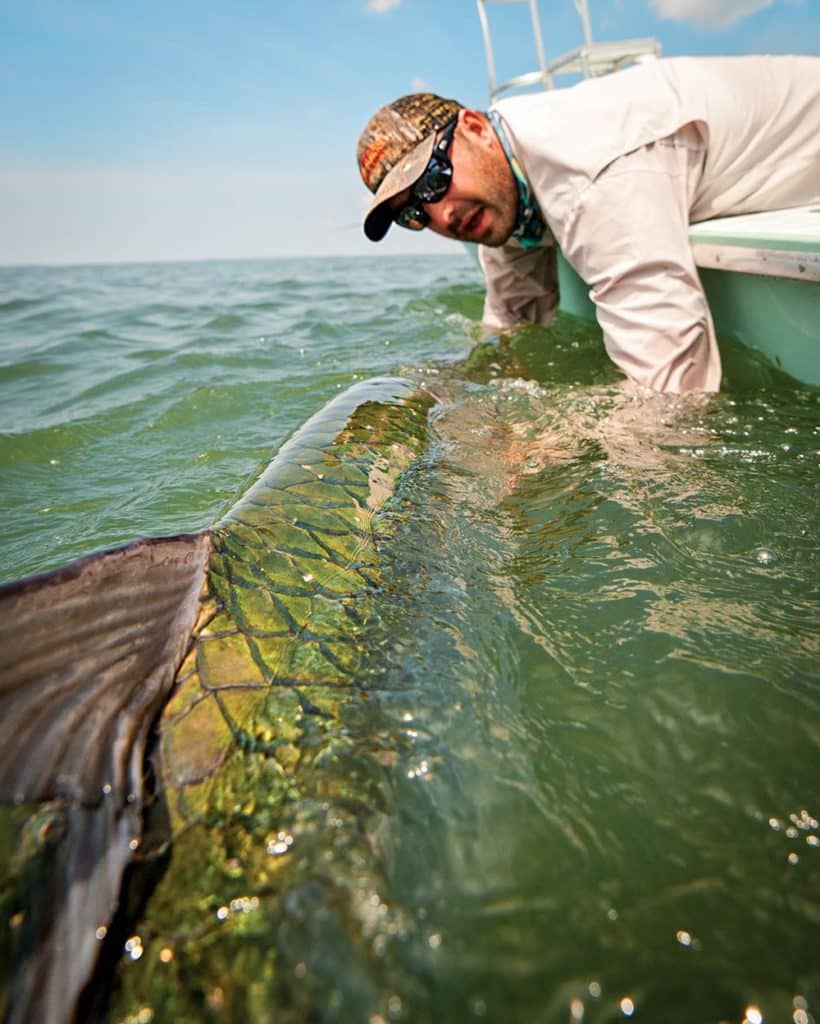
Travel Lanes and Hangouts
Tarpon love seams and borders, and they tend to follow sandbars and edges that divide grassy and sandy areas, as well as ledges that parallel beaches and shorelines where the bottom drops slightly. While many such ledges are not easy to identify at a glance, a topographical map of the area will reveal the depth contours. Then it’s just a matter of figuring out which the fish are using as a travel lane that day.
While the pods of silver kings trekking along the beaches frequently prefer depths of 10 to 20 feet, which in many cases are found beyond the swath of water most often occupied by swimmers and cruising boats, the average water depth of tarpon travel lanes once they reach the flats is 4 to 8 feet, and there are times when the fish will cruise along stretches barely a couple of feet deep.
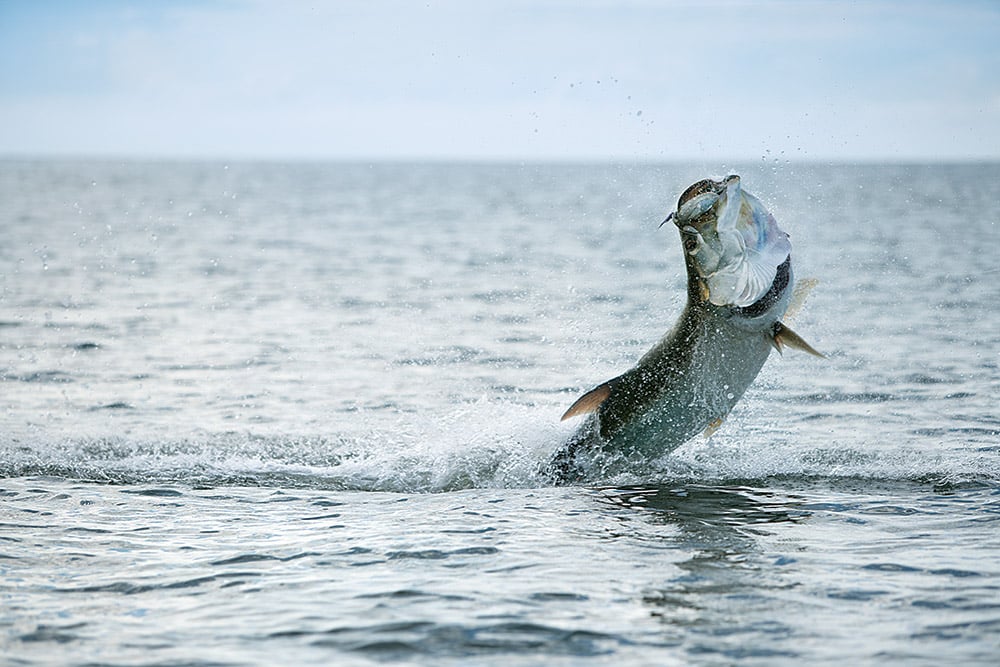
Of course, strong winds and tide changes will push the fish closer in or farther off the shallows. Some of the most productive oceanside tarpon spots in the Keys produce best during a strong incoming tide and wind blowing from an easterly quadrant, both of which push the fish tight against a shallow flat or sandbar, a situation that makes the fishing predictable.
Read Next: Sight-Fishing 101
But those migrating tarpon are not always on the move. There are favorite hangouts where they periodically hold and rest. Deep bowls or channels in the middle of the flats, certain deep island troughs, and protected coves and boat basins often get the nod.
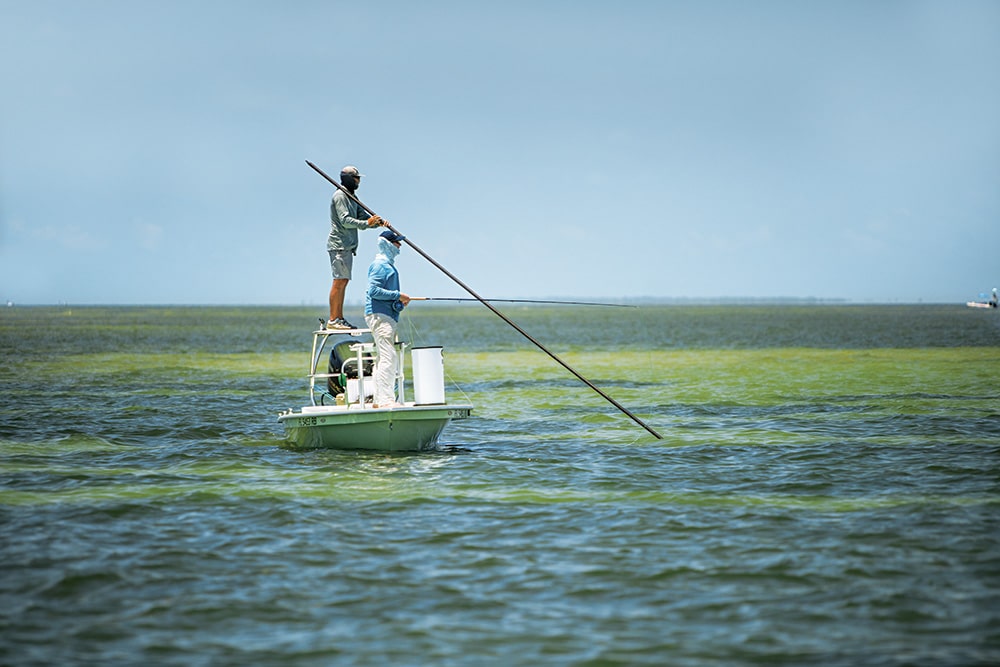
Water Clarity and Light
Sunlight, not clear water, is more important for sight-fishing. The clearest of water is no guarantee that you’ll be able to spot tarpon. Overcast skies and dark bottom, even in a scant 4 or 5 feet of water, will conceal the whereabouts of a school of 100-pounders incredibly well, especially when the fish are hugging the bottom. Furthermore, tarpon have incredible eyesight and easily detect movement and details like hooks, leader knots and fly lines in clear water. Yet the fish’s field of vision is substantially reduced in cloudy or stained water, which bodes well for anglers because a tarpon is more likely to suck in a bait, lure or fly it hasn’t had much time to inspect.
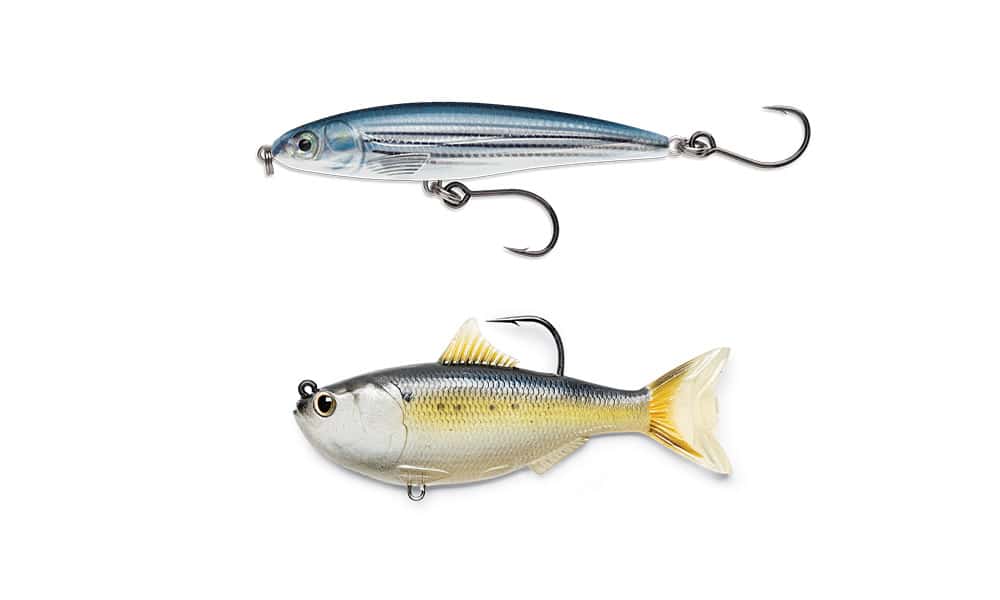
Bright sunlight, meanwhile, heightens contrasts, enabling you to better perceive depth and bottom-configuration changes, not to mention fish. Keep in mind, however, that in Florida optimal visibility usually occurs between 10 a.m. and 3 p.m. in late spring and summer, so before and after such a period, or when cloud cover dims the light, it’s smart to fish shallower spots with light, sandy bottom where the proper boat position provides a good angle to still see tarpon that happen by.
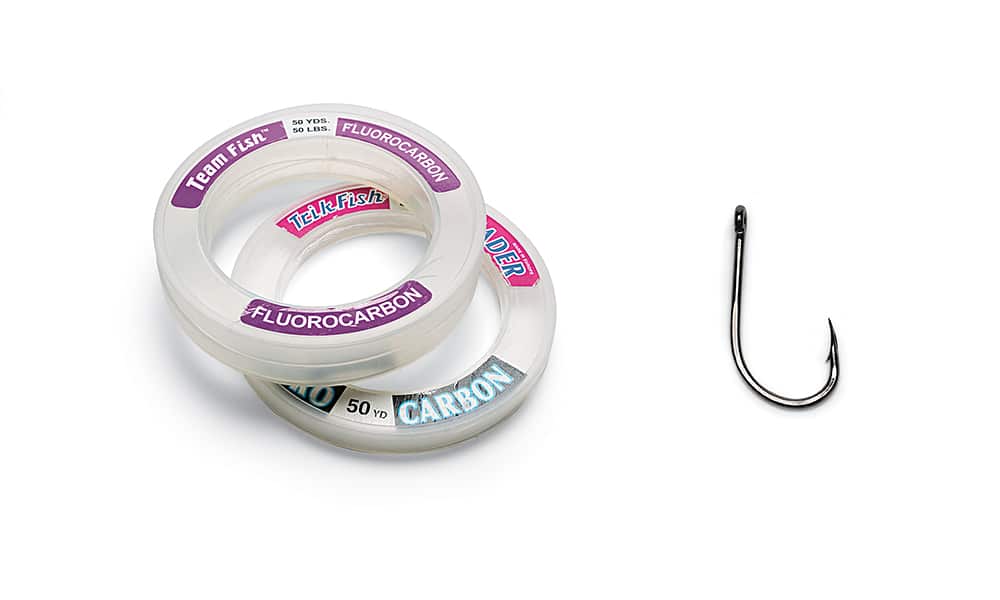
Telltale Signs
Even fish this big often manage to sneak past unsuspecting anglers. At first light and at dusk, especially when the wind dies and the surface turns glassy, sound carries extremely well on the water, and the conditions are conducive for tarpon to roll. Then, you’ll often hear the distinct sound of fish gulping air from quite a ways off. Let your ears guide your eyes. Let them point you in the general direction, and scan for splashes or protruding fins.
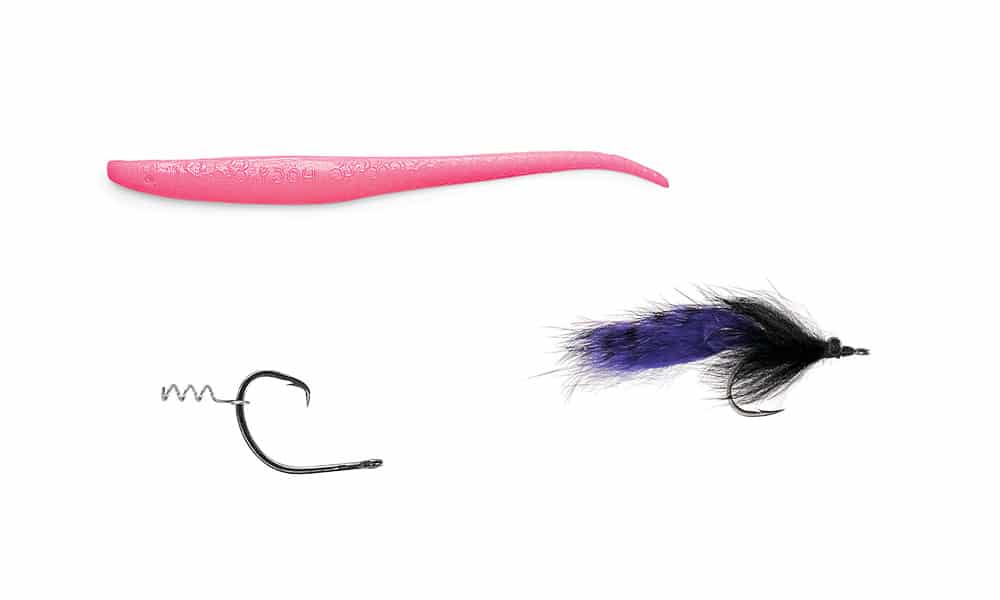
There are times when the fish are happy, unpressured, and in no particular hurry to get anywhere, and they just lollygag by your boat, taking turns at breaking the surface to gulp air and wave their dorsal and caudal fins tantalizingly in the process. But the moment there’s a ripple on the water, chances of tarpon rolling quickly diminish. Then, you must rely on other signs to pinpoint their whereabouts.
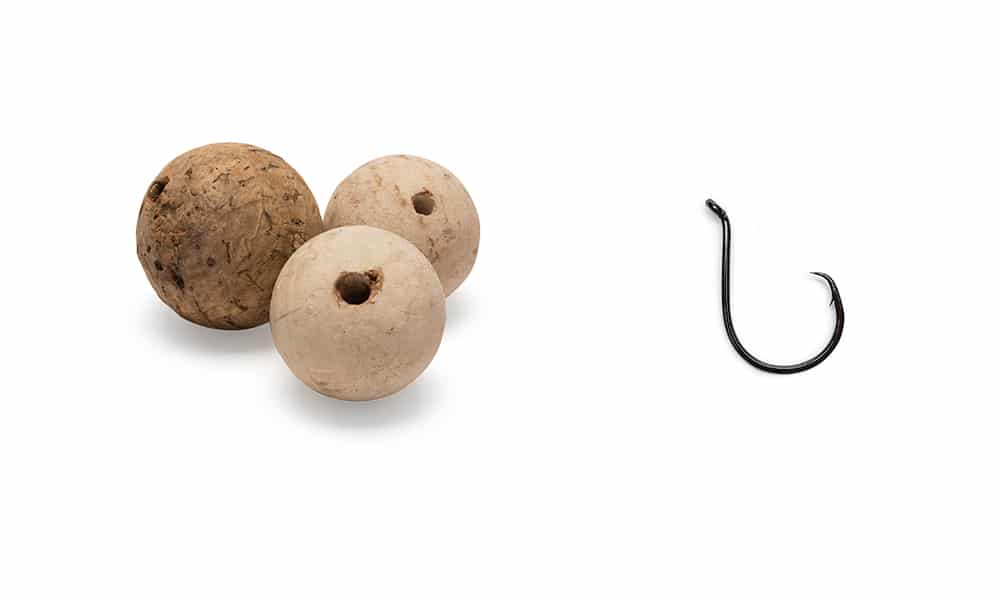
When the fish are cruising close to the top, they often cast a wake. But when there are no signs above the surface, it’s time to look underwater. If the sun is out, shadows show well over light bottom. And over grass, a school of fish appears as a darker spot. How can you be sure it’s tarpon and not a darker patch of grass? Find a couple of quick landmarks as reference points and see if the spot moves.
FAQ
What month is best for tarpon fishing?
The best months for tarpon fishing vary by location, but generally, the peak season is from late spring through summer, specifically April through August in many areas. During these warmer months, tarpon are more active and congregate in coastal waters to spawn.
Where do tarpon hang out?
Tarpon are found in coastal waters, estuaries, bays, and inlets, often near inlets, bridges, and other structures where tidal currents concentrate baitfish. They are also known to frequent flats, channels, and passes in search of food.
What is the biggest tarpon ever caught?
According to the International Game Fish Association, the biggest tarpon ever caught on rod and reel was a massive 286-pound (129.7 kg) fish in 1975 off the coast of Sierra Leone, West Africa by Alex G. Olric.









